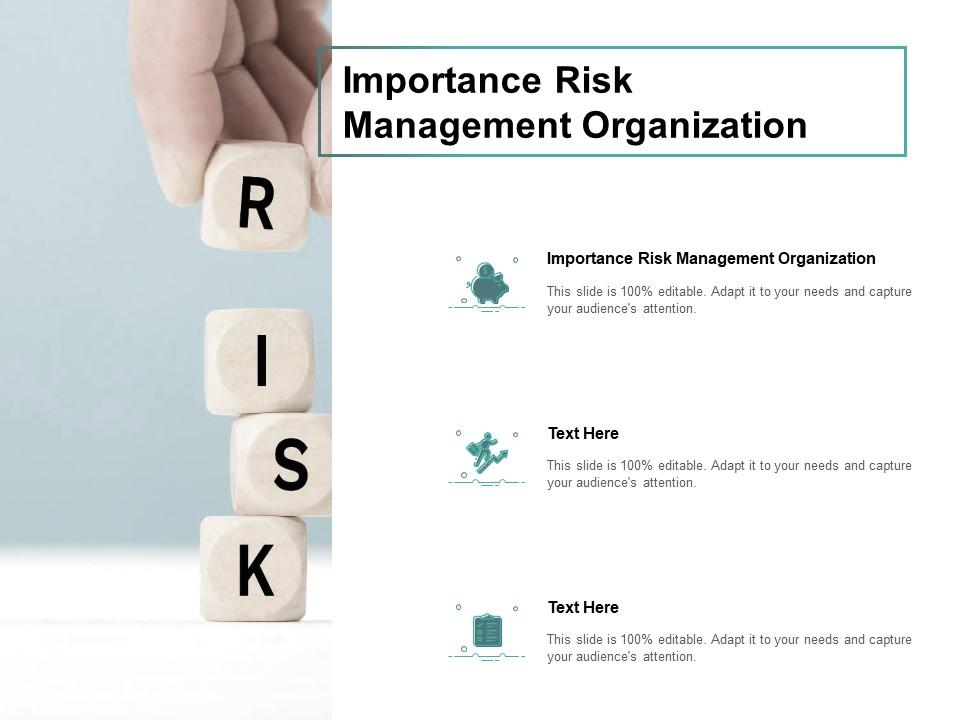Exploring the Increasing Importance of Risk Management in Corporate Strategy
Exploring the Increasing Importance of Risk Management in Corporate Strategy
Blog Article
The Importance of Understanding the Significance of Risk Management in Numerous Industries
:max_bytes(150000):strip_icc()/risk-management-4189908-FINAL-2-976ae194e01848618ca94941ab9d2395.jpg)
The Core Idea of Risk Management and Its Function
Risk Management, the keystone of lots of sectors, rests on the recognition, assessment, and reduction of unpredictabilities in a company atmosphere. It is an integral technique that allows organizations to secure their possessions, credibility, and general survival. By properly recognizing potential dangers, services can develop methods to either protect against these threats from occurring or decrease their effect. The analysis process entails assessing the possibility and prospective seriousness of these dangers. When threats have been identified and examined, the mitigation process entails developing approaches to lower their possible impact. This process is cyclical and continuous, making sure that organizations are prepared for the ever-changing nature of Risk in various industries. The primary purpose, therefore, is to promote strength in the middle of unpredictabilities.
Advantages of Implementing Risk Management in Service Workflow

Revealing the Role of Risk Management in Different Industries
While every sector faces its special set of risks, the application of Risk Management approaches continues to be an usual in their pursuit of sustainability and growth. In the health care industry, Risk Management entails guaranteeing client security and data protection, while in finance, it entails mitigating investment risks and ensuring governing conformity. Inevitably, the function of Risk Management across sectors is to recognize, examine, and alleviate dangers.
Real-life Study Demonstrating Successful Risk Management
To comprehend the value of Risk Management in these lots of markets, one can seek to numerous real-life instances that illustrate the successful application of these steps. As an example, in the energy industry, British Oil created Risk mitigation prepares post the 2010 Gulf of Mexico oil spill. They implemented better safety treatments and stricter regulations which significantly lowered their website more mishaps. Similarly, in money, Goldman Sachs effectively navigated the 2008 monetary crisis by recognizing prospective mortgage-backed safeties risks early. Toyota, upload the 2011 earthquake in Japan, modified its supply chain Management to lessen disruption dangers. These cases show how sectors, picking up from situations, successfully used Risk Management techniques to reduce future risks.
Future Patterns and Advancements in Risk Management Techniques
Cybersecurity, when a peripheral problem, has actually catapulted to the forefront of Risk Management, with approaches focusing on prevention, detection, and reaction. The integration of ESG (Environmental, Social, Administration) elements right into Risk Management is an additional expanding trend, mirroring the boosting acknowledgment of the function that environmental and social threats play in business sustainability. Therefore, the future of Risk Management lies in the combination of innovative modern technology, ingenious techniques, and a holistic strategy.
Final thought
Finally, comprehending the great post to read relevance of Risk Management across a spectrum of sectors is essential for their longevity and prosperity. Tailored approaches can assist mitigate prospective risks, secure properties, and foster stakeholder trust. Additionally, aggressive decision-making help in governing conformity and enhances resource usage. Inevitably, successful Risk Management adds to much more resistant and sustainable companies, highlighting the significance of this look at these guys practice in today's extremely competitive and vibrant business setting.
While every market faces its distinct collection of threats, the application of Risk Management approaches continues to be an usual denominator in their quest of sustainability and growth. In the health care industry, Risk Management requires ensuring patient security and information security, while in finance, it entails mitigating investment threats and ensuring regulatory compliance. Ultimately, the role of Risk Management across industries is to determine, examine, and reduce threats. These instances show exactly how sectors, discovering from dilemmas, successfully applied Risk Management methods to lower future dangers.

Report this page